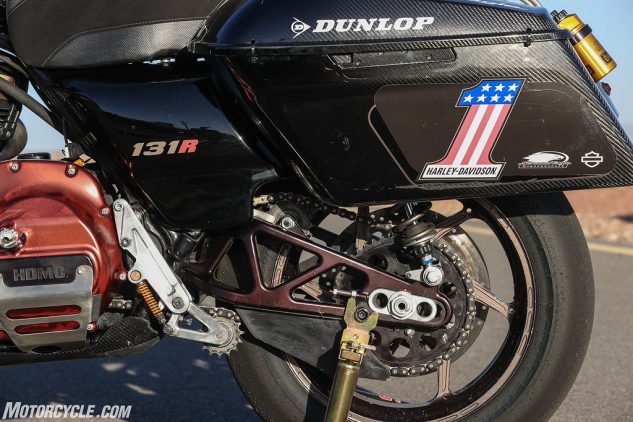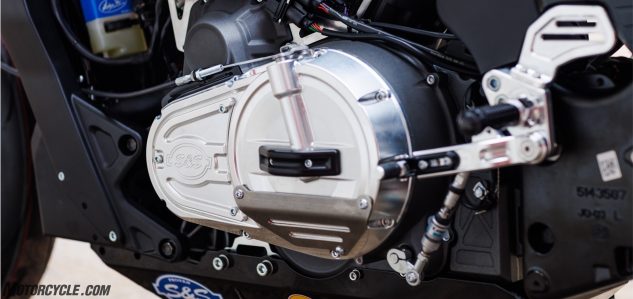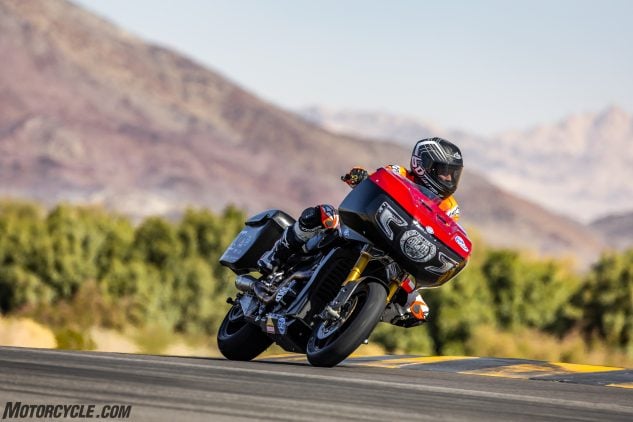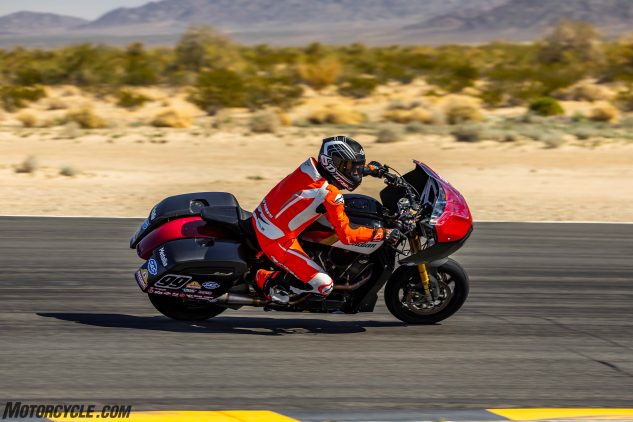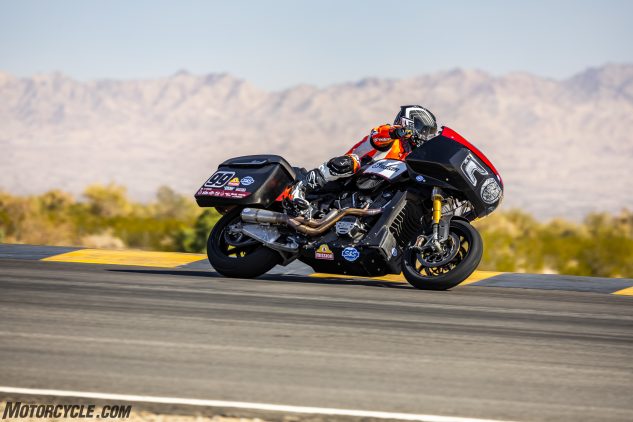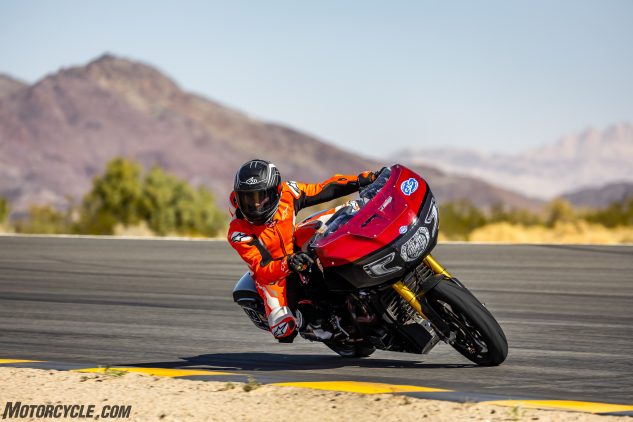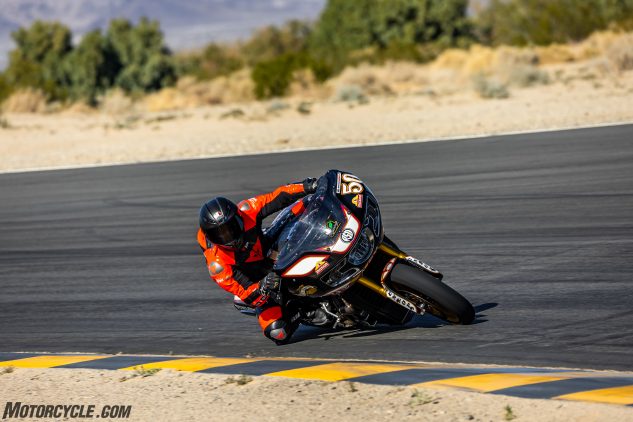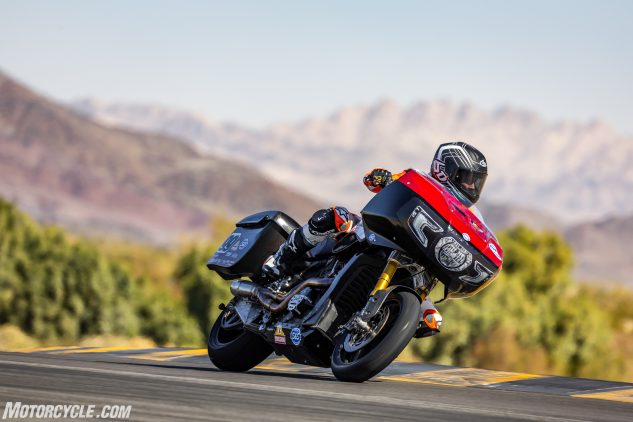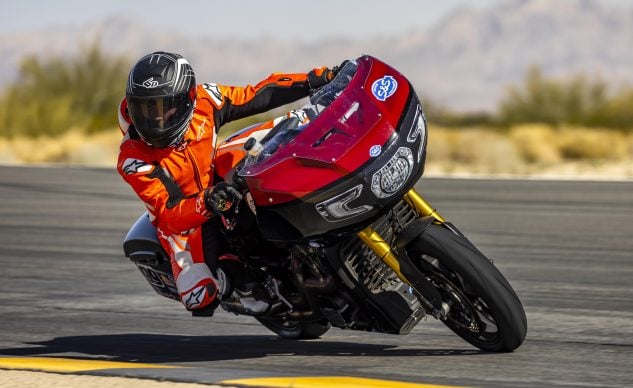
The Harley-Davidson vs. Indian rivalry is a great American classic on par with the likes of Army vs. Navy, Lakers vs. Celtics, Ford vs. Chevy, Pepsi vs. Coke, and even…Google vs. Bing? Ok, maybe not that last one, but you get the point. Harley and Indian have been at each other’s throats going back over a century, save for a 50-odd-year pause in the middle when Indian originally closed its doors. But when Polaris bought the keys to the palace and opened the doors again, the fight resumed as intense as ever when the FTR750 flat tracker started beating Harley’s legendary XR750. Repeatedly.
If you put your mind (and money) to it, this 2022 Indian Challenger bagger is proof you can turn anything into a race bike if you really want to.
+ Highs
| – Sighs
|
Naturally, the rivalry continued over to the asphalt as the King of the Baggers class – originally slated to be a one-off race at Laguna Seca – became such a hit that MotoAmerica tapped it to become part of select rounds on the calendar. With that, the game was on. Harley struck first, winning the 2021 championship with Kyle Wyman aboard the Screaming Eagle Factory Road Glide. Then, in 2022, Indian struck back, taking the title with Tyler O’Hara aboard the Challenger Bagger.
Impressive, yes, but it’s hard to completely understand what goes into these baggers to make them do what they do – hence why Indian invited Yours Truly to come see the 2022 championship-winning Challenger baggers, and even take one for a spin.
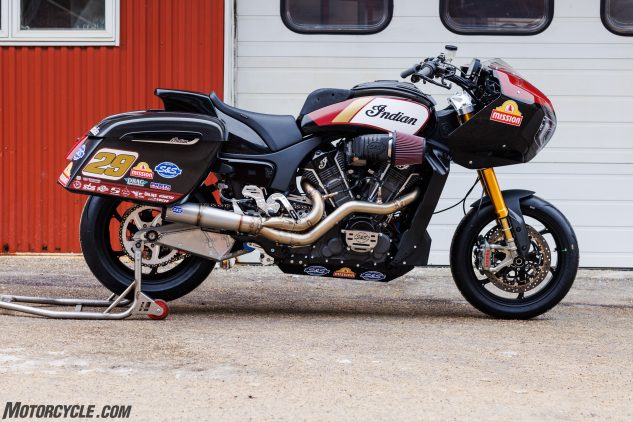
This bike is close, but not exactly like the one we got to ride. The most obvious difference is the air cleaner. The bikes we rode used a different setup with a circular air cleaner with its upper tip tucked under the fuel tank.
A True American Hot Rod
Transforming an Indian Ch allenger into not only a race bike, but a championship-winning race bike able to fight – and win – against the might of Harley-Davidson is no easy task. Indian teamed up with S&S Cycles to build these bikes, with S&S Head Honcho Jeff Bailey also the Chief Engineer of the project. In terms of the modifications and engineering, these are full-on superbikes. Just in different clothes.
King Of The Baggers: Riding The Harley-Davidson Screamin’ Eagle Factory Road Glide Race Bike
Per the rules, the main frame is still stock. The shape of the frame-mounted fairing is also the same but is made from lighter materials. The headlights themselves are gone and a vinyl sticker application gives it the appearance of having the stock lights. And that’s just the start of where the line gets blurred between stock and modified.
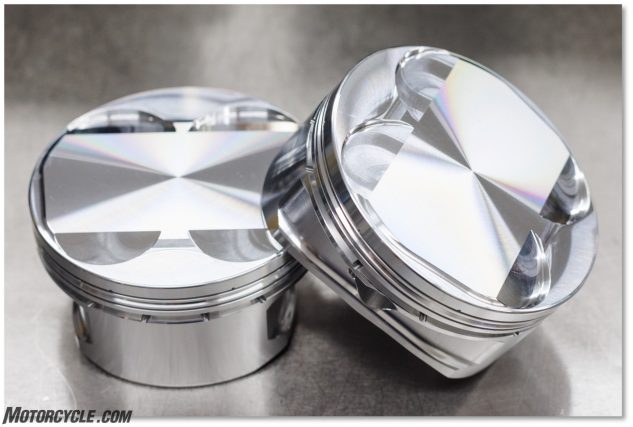
The stock Indian Challenger has huge pistons as it is, but in race trim it gets even bigger, forged pieces.
Race teams are always coy when talking about what’s under the hood, and Indian’s clever wordplay states that the “core engine” is still retained from stock, but we all know there’s nothing stock about it. For starters, the crankcase main bearings are locked into place to help with reliability. There are custom camshafts, 110mm big bore pistons and cylinders, CNC ported heads, and billet manual lash adjuster rocker arms – and that’s just what the team were willing to tell us. Other than the main bearings being fixed, there’s no word on whether the crankshaft is stock, modified, or different altogether.
Technically, the swingarm is the stock piece, but it’s been heavily braced and strengthened to cope with the added power and cornering forces being sent through it. Unlike Harley-Davidson, who CNC machined an all-new swingarm out of billet, you can clearly see remnants of the Indian Challenger swingarm still there, under all the bracing.
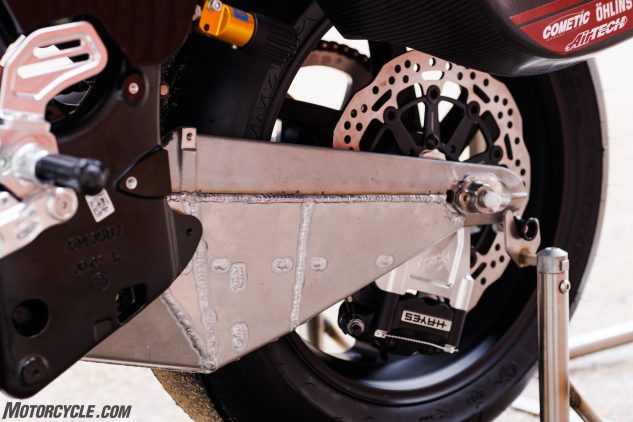
The swingarm bracing is serious, as seen here. You’ll find the stock Challenger swingarm above the weld, and everything below is added on for additional bracing. Note also the fully floating brake rotor and Hayes radial-mount caliper.
Employing a clever bit of racecraft, the fuel tank is also the stock piece – technically. But it’s been sliced in half down the middle, with a section taken out, and the two sides squished back together. The fuel sender has also been moved from the right side of the tank to the left in order to make space for the air cleaner, the upper tip of which tucks under the tank, and enormous 70mm throttle body sticking out the right side of the engine. For 2023, the air cleaner juts out and forward from the throttle body, relieving the space under the tank.
According to Indian, the radiator and transmission are also leftovers from the stock Challenger, though there’s no word as to whether more rows were added to the former to help with cooling. There’s also a quickshifter on the transmission – something conspicuously missing from the Harley.
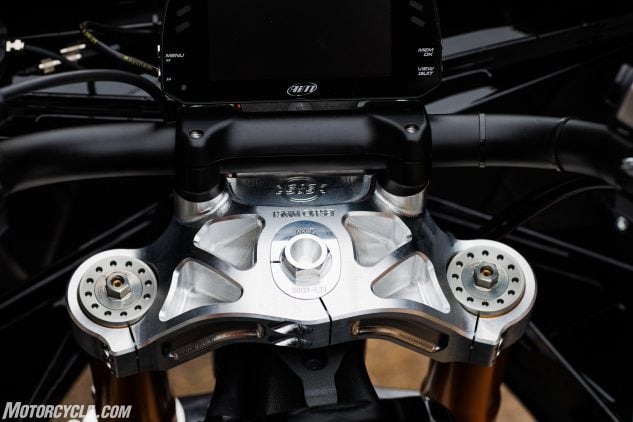
To get proper front-end geometry, these custom billet triple clamps were made with different offsets and an insert in the middle to fine-tune the handling for different tracks.
S&S stepped in and, with the help of chassis tech Kyle Ohnsorg, an accomplished racer whose day job is working at Indian, made the bike handle better than anything this big has the right to. Massive adjustable billet machined triple clamps get the front wheel positioned like it should, and swingarm angle is adjusted, too. There’s Öhlins suspension front and rear, which also serve to raise the bike for additional cornering clearance. Still, Indian had to request special dispensation from MotoAmerica to modify the bottom of the frame, under the radiator, for additional clearance since its riders were scraping it on the ground during testing.
Other goodies include a billet front axle, modified air induction system (mentioned earlier), a 2-into-1 stainless steel exhaust, a billet clutch cover with the cable pull mechanism relocated from the bottom to the top of the case for additional ground clearance, trick billet rearset foot controls (mounted essentially where the passenger pegs would be on the standard Challenger), the custom handlebar assembly to suit factory riders Jeremy McWilliams and Tyler O’Hara, custom bellypan, a chain conversion (for more gearing options depending on the track) and subsequent chain tensioner, rear brake caliper hanger, rear axle assembly, and the adjustable fairing mount.
